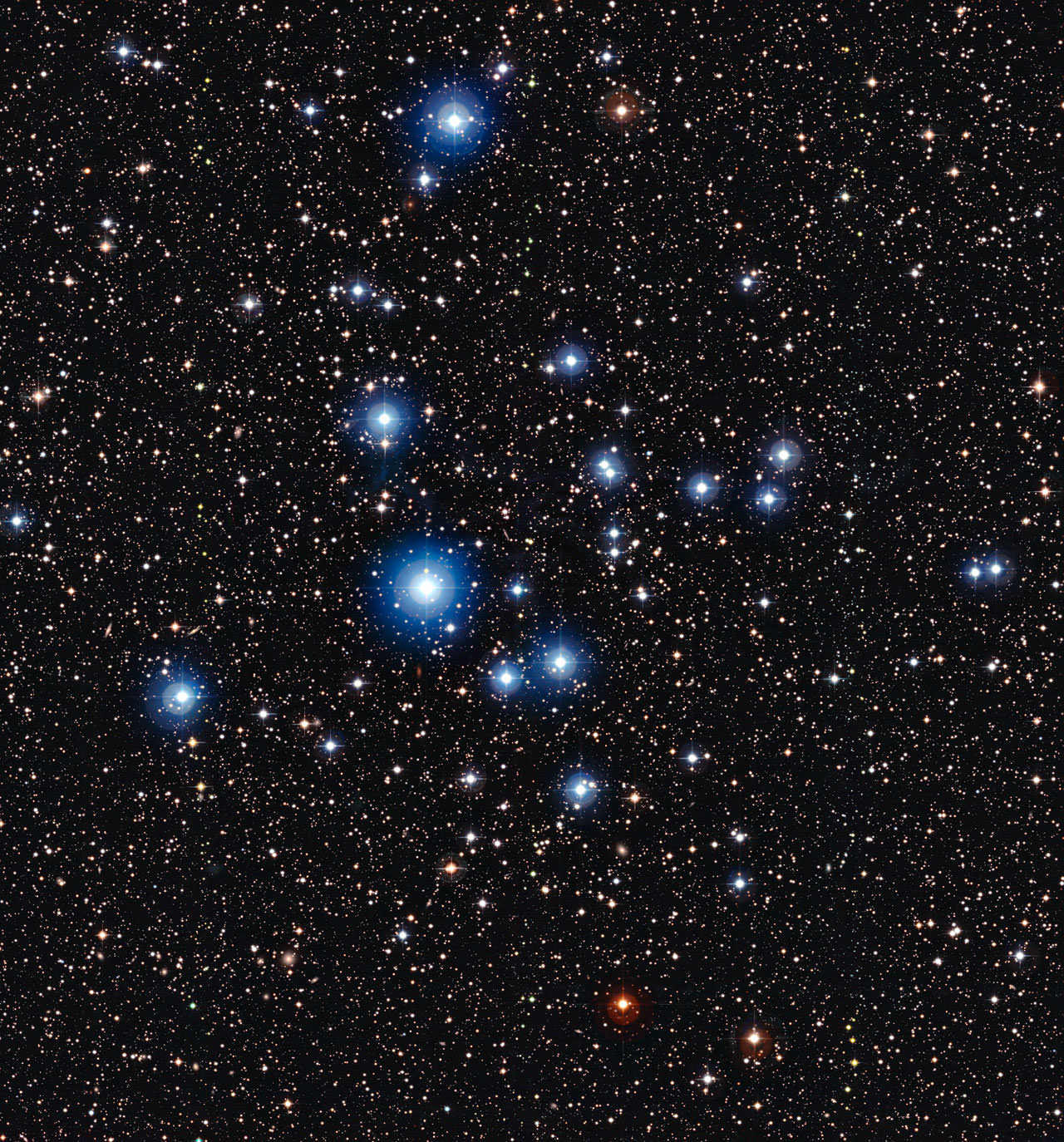A new image from ESO shows a pretty sprinkling of bright blue stars, the star cluster NGC 2547, a group of recently formed stars in the southern constellation of Vela. Even though we recently got a more precise estimate on how old the Universe is from the Planck mission (13.82 billion years), this is a look at some fairly young -- new and blue -- stars.
But how young are these cosmic youngsters really?
ESO scientists say that although the exact ages of these stars remain uncertain, estimates range from 20 to 35 million years old. That doesn't sound all that young, after all. However, our Sun is 4.6 billion years old and has not yet reached middle age. That means that if you imagine that the Sun as a 40 year-old person, the bright stars in the picture are three-month-old babies.
Most stars do not form in isolation, but in rich clusters with sizes ranging from several tens to several thousands of stars. Clusters are key objects for astronomers studying how stars evolve through their lives. The members of a cluster were all born from the same material at about the same time, making it easier to determine the effects of other stellar properties.
While NGC 2547 contains many hot stars that glow bright blue, also visible are one or two yellow or red stars which have already evolved to become red giants. Open star clusters like this usually only have comparatively short lives, of the order of several hundred million years, before they disintegrate as their component stars drift apart. [caption id="attachment_101037" align="aligncenter" width="580"]
This picture was created from images forming part of the Digitized Sky Survey 2. It shows the rich region of sky around the young open star cluster NGC 2547 in the southern constellation of Vela (The Sail). Credit:
ESO/Digitized Sky Survey 2. Acknowledgement: Davide De Martin[/caption]
The star cluster NGC 2547 lies in the southern constellation of Vela (The Sail), about 1500 light-years from Earth, and is bright enough to be easily seen using binoculars. It was discovered in 1751 by the French astronomer Nicolas-Louis de Lacaille during an astronomical expedition to the Cape of Good Hope in South Africa, using a tiny telescope of less than two centimeters aperture.
Between the bright stars in this picture you can see plenty of other objects, especially when zooming in. Many are fainter or more distant stars in the Milky Way, but some, appearing as fuzzy extended objects, are galaxies, located millions of light-years beyond the stars in the field of view.
Source:
ESO
 Universe Today
Universe Today
